Welcome to This Date in Aviation History, getting of you caught up on milestones, important historical events and people in aviation from September 9 through September 11.
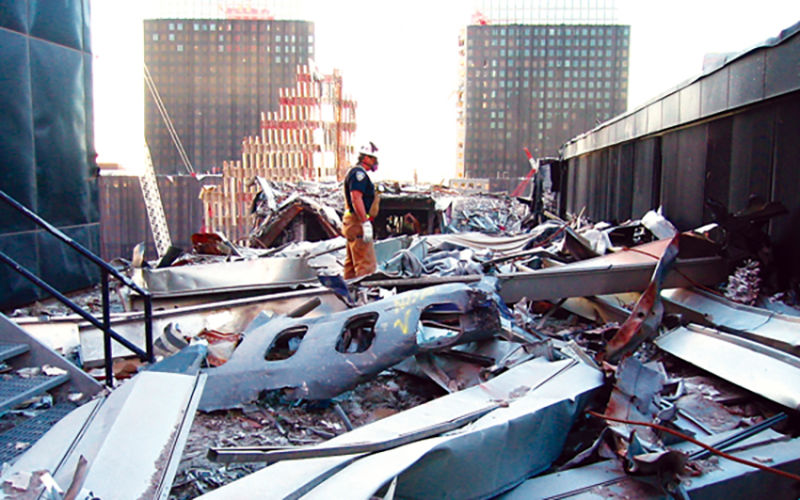
September 11, 2001 – Terrorists hijack four airliners in a coordinated attack on the United States. Four teams of terrorists boarded early morning flights departing from Boston, Washington DC, and Newark and hijacked American Airlines Flight 11, United Airlines Flight 175, American Airlines Flight 77, and United Airlines Flight 93. After killing or otherwise subduing the flight crew, the terrorists flew the first two aircraft into each of the towers of the World Trade Center in New York City, and crashed the third airliner into the Pentagon in Washington, DC. Passengers on board Flight 93, who had learned of the other attacks, fought back against the hijackers. During the struggle, the hijacker pilot crashed the airliner into a field near Shanksville, Pennsylvania, just minutes from Washington, DC. It is believed that their intended target was the White House or the US Capitol. The attacks killed 2,731 people in New York and Washington, DC along with all 246 passengers and crew on the airliners.
For a full account of the events of this day, see This Date in Aviation History: September 11, 2001
Short Takeoff
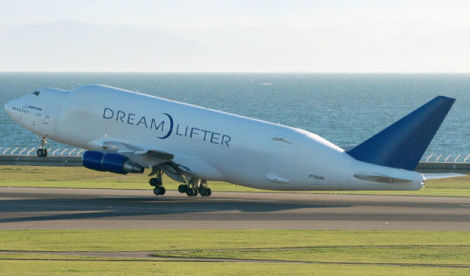
September 9, 2006 – The first flight of the Boeing 747 Dreamlifter, a specially modified 747-400 that was developed by Boeing to transport sections of the Boeing 787 Dreamliner for final assembly. Originally known as the Large Cargo Freighter (LCF), the Dreamlifter was modified in Taiwan by Evergreen Aviation Technologies and has a cargo compartment that can accommodate 65,000 cubic feet of cargo, the largest volume in the world. The Dreamlifter can hold triple the volume of the Boeing 747-400F freighter and has an 803,001 pound maximum takeoff weight (MTOW). The Dreamlifter entered service in 2007 and four have been built. It is flown exclusively by Boeing, with no other commercial customers.
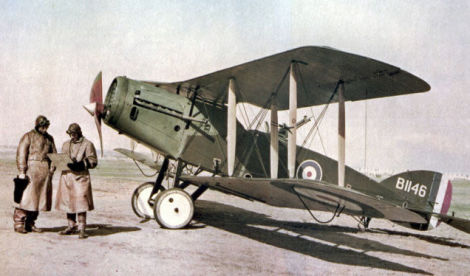
September 9, 1916 – The first flight of the Bristol F.2 Fighter, a two-seat fighter and reconnaissance aircraft developed for the Royal Flying Corps during WWI. Unlike most two-seat reconnaissance aircraft, which were not known for their dogfighting capabilities, the F.2 proved to be very agile and could “mix it up” with single-seat enemy fighters. The F.2 was known for making attacks with its forward-firing machine guns while the observer in the rear seat provided cover with a swiveling machine gun. Popularly known as the “Brisfit” or “Biff,” the F.2 saw its first action in April 1917 during the Battle of Arras, and served throughout the rest of the war. Production continued until 1927, with many surplus aircraft modified for civilian use. A total of 5,329 were built.
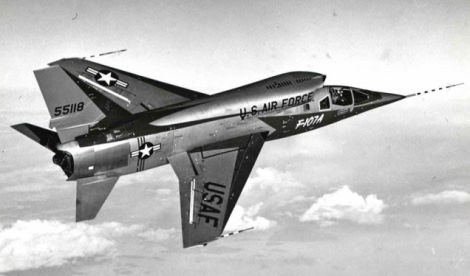
September 10, 1956 – The first flight of the North American F-107, a fighter-bomber developed for the US Air Force based on the North American F-100 Super Sabre. The F-107 was initially designated the F-100B, but soon became so heavily modified that the Air Force gave it a new designation. In order to accommodate a radar, the Super Sabre’s nose air intake was moved to the top of the aircraft, which caused some concern among pilots who might be forced to eject. It also severely limited rearward visibility, but this wasn’t considered a problem since the YF-107 relied on missiles fired from beyond visual range. North American built three prototypes, but it lost an Air Force competition against the Republic F-105 Thunderchief and never entered production. The first two prototypes are housed in the Pima Air and Space Museum in Arizona and the National Museum of the United States Air Force in Ohio, while the third was scrapped in the 1960s.

September 10, 1944 – The first flight of the Fairchild C-82 Packet, a cargo and troop transport developed by Fairchild Aircraft to replace the Curtiss C-46 Commando and Douglas C-47 Dakota. To preserve critical wartime supplies, the Packet was originally intended to be built from plywood and steel, but design requirements dictated a switch to all-metal construction. Delivery to the US Army Air Forces did not take place until June 1945, so its use in WWII was limited. Nevertheless, the Packet did take part in cargo and troop carrying missions, and was used as a paratroop transport and glider tug. Following the war, its payload and rugged construction made the C-82 popular with civilian operators. A total of 223 were produced, and the Packet formed the basis for the highly successful C-119 Flying Boxcar which entered service in 1949.
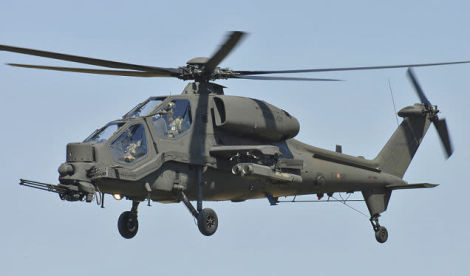
September 11, 1983 – The first flight of the Agusta A129 Mangusta, an armed attack helicopter originally designed by Agusta (now AgustaWestland) and the first dedicated attack helicopter to be designed and produced in Europe. Comparable to the American Boeing AH-64 Apache, the Mangusta (Mongoose) is armed with a single 20mm three-barrel M197 Gatling cannon housed in a chin turret, and can be armed with up to 76 unguided rockets as well as Hellfireor BGM-71 TOW anti-tank missiles. It can also carry air-to-air missiles such as the AIM-92 Stinger or Mistral. The A129 entered service with the Italian Army in 1990, and has seen action in Macedonia, Iraq and Afghanistan. Sixty have been built, and the Mangusta remains in production.
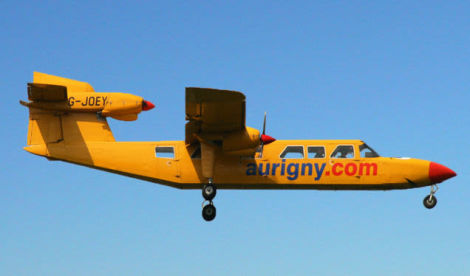
September 11, 1970 – The first flight of the Britten-Norman Trislander, an 18-seat passenger and utility short takeoff and landing (STOL) aircraft produced on the Isle of Wight and in Romania from 1970-1980. Designed by John Britten and Desmond Norman, the Trislander is powered by three Lycoming O-540 six-cylinder piston engines, two mounted on the high wing and one mounted in the tail, and has a top speed of 180 mph. The Trislander was developed from the twin-engine Britten-Norman Islander, and its STOL capabilities allow it to take off from landing strips less than 500 feet long. It entered service with Aurigny Air Services in 1971, and a total of 72 were built.
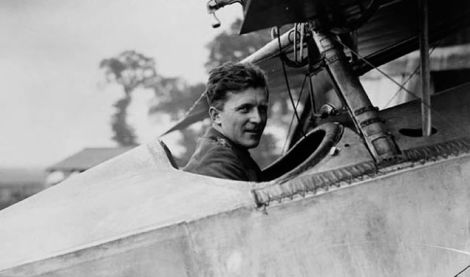
September 11, 1956 – The death of William Avery “Billy” Bishop. Bishop was born on February 8, 1894 in Owen Sound, Ontario, Canada and made his first “flight” in a plane he constructed from wooden crates, cardboard and string that he launched from the top of his three-story house. When WWI broke out, Bishop served with the 7th Canadian Mounted Rifles, honing his skills as a marksman, then transferred to the Royal Flying Corps, first as an observer. He received his pilot’s wings in 1916. By the end of the war, Bishop was credited with 72 victories, making him the top Canadian ace of WWI. During WWII, Bishop served as the Director of the Royal Canadian Air Force in charge of recruitment, and his fame led so many to apply as pilots that many were turned away. His decorations include the Victoria Cross, Distinguished Service Order & Bar, Military Cross, Distinguished Flying Cross, Légion d’honneur and the Croix de Guerre with palm.
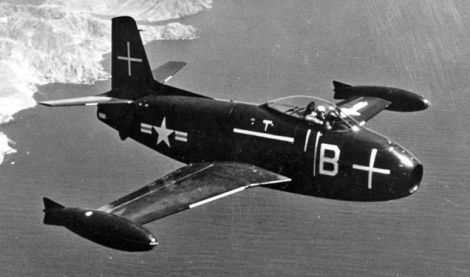
September 11, 1946 – The first flight of the North American FJ-1 Fury, the first operational jet-powered fighter to enter service with the US Navy. The wings and tail were derived from the North American P-51 Mustang, and it was powered by a single Allison J35 turbojet engine that gave the Fury a top speed of 547 mph. The FJ-1 entered service in 1947 and made the Navy’s first operational carrier landing at sea aboard USS Boxer (CV-21) in 1948. With the rapid pace of fighter development in that era, the transition to swept-wing fighters quickly rendered the FJ-1 obsolete, and only 31 were produced. However, the Fury was soon developed into the North American F-86 Sabre, one of the most successful fighters of the 195os, and the Naval variant of the Sabre, now called the FJ-2 Fury, followed in 1954.
Connecting Flights
If you enjoy these Aviation History posts, please let me know in the comments. You can find more posts about aviation history, aviators, and aviation oddities at Wingspan.